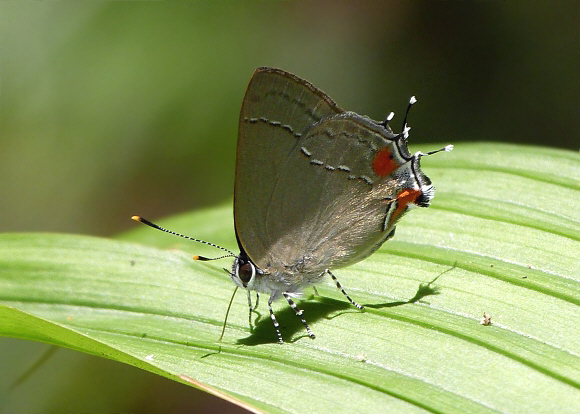
Introduction
Almost all neotropical Theclinae species are placed in the Eumaeini. The tribe is not particularly well represented in collections, so until fairly recently a high percentage remained unstudied, and were inappropriately filed away in the ‘convenience’ genus Thecla. Many taxonomists have attempted to rationalise the systematics of the Eumaeini, the most recent being Robbins who published a revision in 2004, reclassifying the taxa into 83 genera. Currently there are 1058 known species. Taking into account their small size, secretive behaviour, and the great similarities between many species, it is estimated that about another 200 species probably remain to be discovered.
Robbins assigned 9 species to the genus Gargina, i.e. gnosia, gargophia, thyesta, caninius, emessa, humber, thoria, panchaea and another as yet un-named taxon. It is likely that further species will be discovered in the near future.
Males of Gargina are a dark earthy brown on the upperside, and most species have an iridescent blue-violet suffusion on the basal half of the wings. In emessa the iridescence is greenish. Males are also distinguished by the presence of a prominent oval patch of androconial scales toward the end of the discal cell of the forewings. Females are plain earthy brown above.
Gargina emessa is distributed from Nicaragua to Brazil.
Habitats
This species is found in rainforest at altitudes between about 200-800m.
Lifecycle
To be completed.
Adult behaviour
Both sexes almost certainly spend the major part of their lives in the forest canopy.
